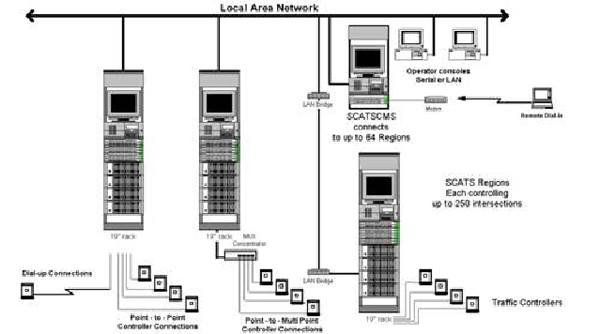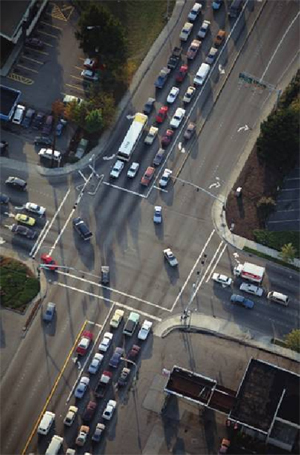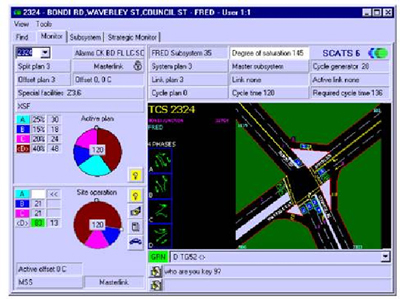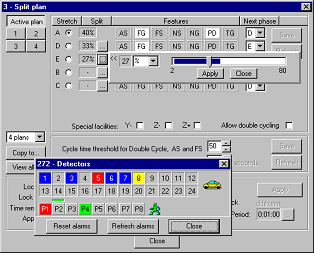 SCATS Adaptive Traffic Management SCATS Adaptive Traffic Management
| Many major cities throughout the world have made SCATS (Sydney Coordinated Adaptive Traffic System) their first choice for adaptive traffic management. The Road and Traffic Authority (RTA) of the New South Wales State Government of Australia are both the developers of SCATS and one of the world’s largest users of the system. SCATS is also widely acknowledged as the adaptive urban traffic control system ready for the 21st century. SCATS has been installed extensively, controlling a diverse range of traffic conditions throughout Australia, Asia and elsewhere in the world. |
 |
|
 |
A unique mix skills and experience allows us to offer a wide range of solutions to meet your needs. Our substantial technical background ensures your solution, whether it requires an adaptive traffic control design and installation, control room integration, communication, surveillance, driver information technologies or a complete intelligent transport system (ITS).
We know that no two requirements are ever the same, so flexibility is a key element of our approach. If required, service and maintenance agreements can be incorporated in the total QTC solution. Service packages can include field and communications equipment, control centre management, as well as training for control centre and maintenance staff.
A SCATS system from QTC Traffic can be installed and operational in a short time frame. A typical 60 intersection initial system on a single Regional Computer can be completed and handed over in operation in less than 12 months. |
No traffic counts are necessary for system set-up, only a plan of the intersection showing detectors, signals etc and its staging sequence. Once the data circuit between the junction and the Regional Computer is completed, an operator with a little experience can set up a junction in 5 minutes. At this point the junction will be running adaptively with full monitoring and alarm facilities.
Bus priority is a feature of a number of SCATS systems (notably Sydney, Melbourne and other Australian cities, Christchurch NZ, and Singapore) and a range of in-vehicle transponders are available to trigger priority at specified approaches at specified junctions. |
 |
 List of major functions of SCATS, Adaptive Traffic Control System List of major functions of SCATS, Adaptive Traffic Control System
- Plan change by traffic activity
- Plan change by time-of-day
- Plan change by remote initiation
- Monitoring of detector and lamp alarms
- Monitoring of controller integrity
- Loss of traffic data alarm
- Traffic congestion alarm
- Alarm log to terminal and/or disk
- Check/alter controller timings
- Check/alter fixed time coordination
- Manual dwell (hold) of any phase
- Data message validation
- Display of communication data
- Manual lock of cycle length
- Manual lock of phase splits
- Stored strategy from disk
- Library of special routines and instruction sets
- Time-distance diagram display
- Print screen facilities
- PC to minicomputer transfers
- Colour graphics
- Operator activity log
- Security keys and passwords
- Archiving of total database
- Archiving of controller timings
- Wall map driver
- Automatic daily saturation flow calibration for each lane
- Double cycling facility
- VIP & emergency vehicle priority
- Stored emergency route priority
- Field terminal access at any local controller
- Five minute traffic counts from any detector in the system
- Inter-terminal message facility
- Ramp Metering
- System support and backup
|
 |
URL:
www.scats.com.au
|
|







